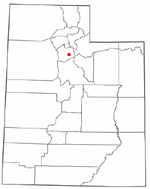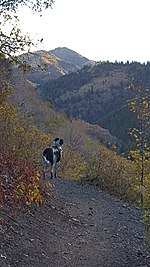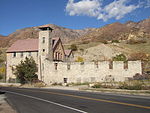Mount Olympus (Utah)

Mount Olympus in the U.S. state of Utah is one of the most prominent and recognizable mountains viewable from practically every location in the Salt Lake Valley. Mount Olympus is not the tallest peak along the Wasatch Front, but its unusual form and location make it a popular hiking destination for locals. The mountain is situated immediately east of the center of the Salt Lake Valley (due east from Murray and Taylorsville). Distinctive features of the mountain are its twin peaks and other outcroppings, the highest of which is called "Summit Peak" and which towers above the valley to an elevation of 9,030 feet (2,752 m). Thus, the peak looms about 4,800 feet (1,463 m) above the valley floor.
Excerpt from the Wikipedia article Mount Olympus (Utah) (License: CC BY-SA 3.0, Authors, Images).Mount Olympus (Utah)
Mount Olympus Trail,
Geographical coordinates (GPS) Address Nearby Places Show on map
Geographical coordinates (GPS)
| Latitude | Longitude |
|---|---|
| N 40.6566144 ° | E -111.7710429 ° |
Address
Mount Olympus Trail
Mount Olympus Trail
Utah, United States
Open on Google Maps









